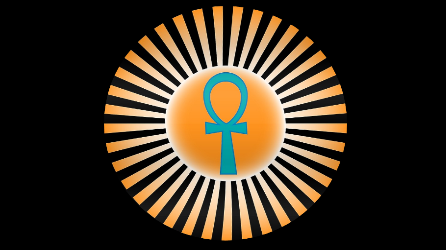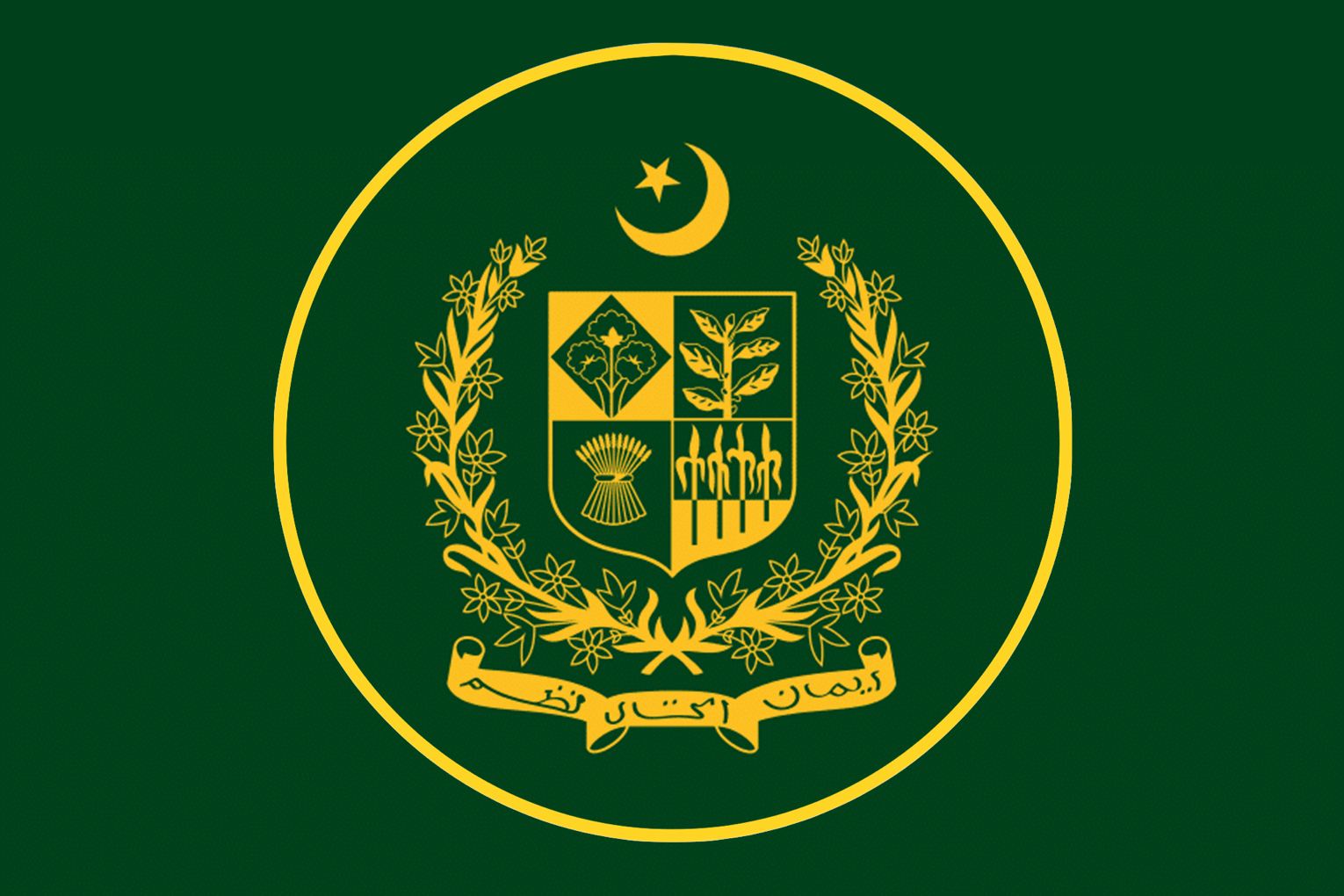| National Factbook |
| Flag: |

|
| Nation Name: |
Islamic Republic 0f Pakistan |
| Leader Name: |
Paralaxus |
| Currency: |

Pakistani Rupee |
| National Animal: |

Markhor |
| History: |
After independence in 1947, Jinnah, the President of the Muslim League, became the nation's first Governor-General as well as the first President-Speaker of the Parliament, but he died of tuberculosis on 11 September 1948.[79] Meanwhile, Pakistan's founding fathers agreed to appoint Liaquat Ali Khan, the secretary-general of the party, the nation's first Prime Minister. From 1947 to 1956, Pakistan was a monarchy within the Commonwealth of Nations, and had two monarchs before it became a republic.[80]
The American CIA film on Pakistan made in 1950 examines the history and geography of Pakistan.
"You are free; you are free to go to your temples, you are free to go to your mosques or to any other place or worship in this State of Pakistan. You may belong to any religion or caste or creed – that has nothing to do with the business of the State."
—Muhammad Ali Jinnah's first speech to the Constituent Assembly of Pakistan[81]
The creation of Pakistan was never fully accepted by many British leaders, among them Lord Mountbatten.[82] Mountbatten clearly expressed his lack of support and faith in the Muslim League's idea of Pakistan.[83] Jinnah refused Mountbatten's offer to serve as Governor-General of Pakistan.[84] When Mountbatten was asked by Collins and Lapierre if he would have sabotaged Pakistan had he known that Jinnah was dying of tuberculosis, he replied 'most probably'.[85]
Maulana Shabbir Ahmad Usmani, a respected Deobandi alim (scholar) who occupied the position of Shaykh al-Islam in Pakistan in 1949, and Maulana Mawdudi of Jamaat-i-Islami played a pivotal role in the demand for an Islamic constitution. Mawdudi demanded that the Constituent Assembly make an explicit declaration affirming the "supreme sovereignty of God" and the supremacy of the shariah in Pakistan.[86]
A significant result of the efforts of the Jamaat-i-Islami and the ulama was the passage of the Objectives Resolution in March 1949. The Objectives Resolution, which Liaquat Ali Khan called the second most important step in Pakistan's history, declared that "sovereignty over the entire universe belongs to God Almighty alone and the authority which He has delegated to the State of Pakistan through its people for being exercised within the limits prescribed by Him is a sacred trust". The Objectives Resolution has been incorporated as a preamble to the constitutions of 1956, 1962, and 1973.[87]
Democracy was stalled by the martial law that had been enforced by President Iskander Mirza, who was replaced by the army chief, General Ayub Khan. After adopting a presidential system in 1962, the country experienced exceptional growth until a second war with India in 1965 that led to an economic downturn and wide-scale public disapproval in 1967.[88][89] Consolidating control from Ayub Khan in 1969, President Yahya Khan had to deal with a devastating cyclone that caused 500,000 deaths in East Pakistan.[90]
In 1970 Pakistan held its first democratic elections since independence, meant to mark a transition from military rule to democracy, but after the East Pakistani Awami League won against the Pakistan Peoples Party (PPP), Yahya Khan and the military establishment refused to hand over power.[91][92] Operation Searchlight, a military crackdown on the Bengali nationalist movement, led to a declaration of independence and the waging of a war of liberation by the Bengali Mukti Bahini forces in East Pakistan,[92][93] which in West Pakistan was described as a civil war as opposed to a war of liberation.[94]
Independent researchers estimate that between 300,000 and 500,000 civilians died during this period while the Bangladesh government puts the number of dead at three million,[95] a figure that is now nearly universally regarded as excessively inflated.[96] Some academics such as Rudolph Rummel and Rounaq Jahan say both sides[97] committed genocide; others such as Richard Sisson and Leo E. Rose believe there was no genocide.[98] In response to India's support for the insurgency in East Pakistan, preemptive strikes on India by Pakistan's air force, navy, and marines sparked a conventional war in 1971 that resulted in an Indian victory and East Pakistan gaining independence as Bangladesh.[92]
With Pakistan surrendering in the war, Yahya Khan was replaced by Zulfikar Ali Bhutto as president; the country worked towards promulgating its constitution and putting the country on the road to democracy. Democratic rule resumed from 1972 to 1977—an era of self-consciousness, intellectual leftism, nationalism, and nationwide reconstruction.[99] In 1972 Pakistan embarked on an ambitious plan to develop its nuclear deterrence capability with the goal of preventing any foreign invasion; the country's first nuclear power plant was inaugurated in that same year.[100][101] Accelerated in response to India's first nuclear test in 1974, this crash program was completed in 1979.[101]
Democracy ended with a military coup in 1977 against the leftist PPP, which saw General Zia-ul-Haq become the president in 1978. From 1977 to 1988, President Zia's corporatisation and economic Islamisation initiatives led to Pakistan becoming one of the fastest-growing economies in South Asia.[102] While building up the country's nuclear program, increasing Islamisation,[103] and the rise of a homegrown conservative philosophy, Pakistan helped subsidise and distribute US resources to factions of the mujahideen against the USSR's intervention in communist Afghanistan.[104] Pakistan's North-West Frontier Province became a base for the anti-Soviet Afghan fighters, with the province's influential Deobandi ulama playing a significant role in encouraging and organising the 'jihad'.[105]
President Zia died in a plane crash in 1988, and Benazir Bhutto, daughter of Zulfikar Ali Bhutto, was elected as the country's first female Prime Minister. The PPP was followed by conservative Pakistan Muslim League (N), and over the next decade the leaders of the two parties fought for power, alternating in office while the country's situation worsened; economic indicators fell sharply, in contrast to the 1980s. This period is marked by prolonged stagflation, instability, corruption, nationalism, geopolitical rivalry with India, and the clash of left wing-right wing ideologies.[106] As PML (N) secured a supermajority in elections in 1997, Sharif authorised nuclear testings (See:Chagai-I and Chagai-II), as a retaliation to the second nuclear tests ordered by India, led by Prime Minister Atal Bihari Vajpayee in May 1998.[107]
Military tension between the two countries in the Kargil district led to the Kargil War of 1999, and turmoil in civic-military relations allowed General Pervez Musharraf to take over through a bloodless coup d'état.[108][109] Musharraf governed Pakistan as chief executive from 1999 to 2001 and as President from 2001 to 2008—a period of enlightenment, social liberalism, extensive economic reforms,[110] and direct involvement in the US-led war on terrorism. When the National Assembly historically completed its first full five-year term on 15 November 2007, the new elections were called by the Election Commission.[111]
After the assassination of Benazir Bhutto in 2007, the PPP secured the most votes in the elections of 2008, appointing party member Yousaf Raza Gillani as Prime Minister.[112] Threatened with impeachment, President Musharraf resigned on 18 August 2008, and was succeeded by Asif Ali Zardari.[113] Clashes with the judicature prompted Gillani's disqualification from the Parliament and as the Prime Minister in June 2012.[114] By its own financial calculations, Pakistan's involvement in the war on terrorism has cost up to $118 billion,[115] sixty thousand casualties and more than 1.8 million displaced civilians.[116] The general election held in 2013 saw the PML (N) almost achieve a supermajority, following which Nawaz Sharif was elected as the Prime Minister, returning to the post for the third time in fourteen years, in a democratic transition.[117] In 2018, Imran Khan (the chairman of PTI) won the 2018 Pakistan general election with 116 general seats and became the 22nd Prime Minister of Pakistan in election of National Assembly of Pakistan for Prime Minister by getting 176 votes against Shehbaz Sharif (the chairman of PML (N)) who got 96 votes.[118] In April 2022, Shehbaz Sharif was elected as Pakistan's new prime minister, after Imran Khan lost a no-confidence vote in the parliament.[119]
|
| Geography |
| Continent: |
North America |
| Land Area: |
305,774.60 sq. km |
| Terrain: |
The geography and climate of Pakistan are extremely diverse, and the country is home to a wide variety of wildlife.[147] Pakistan covers an area of 881,913 km2 (340,509 sq mi), approximately equal to the combined land areas of France and the United Kingdom. It is the 33rd-largest nation by total area, although this ranking varies depending on how the disputed territory of Kashmir is counted. Pakistan has a 1,046 km (650 mi) coastline along the Arabian Sea and the Gulf of Oman in the south[148] and land borders of 6,774 km (4,209 mi) in total: 2,430 km (1,510 mi) with Afghanistan, 523 km (325 mi) with China, 2,912 km (1,809 mi) with India and 909 km (565 mi) with Iran.[149] It shares a marine border with Oman,[150] and is separated from Tajikistan by the cold, narrow Wakhan Corridor.[151] Pakistan occupies a geopolitically important location at the crossroads of South Asia, the Middle East, and Central Asia.[152]
Geologically, Pakistan is located in the Indus–Tsangpo Suture Zone and overlaps the Indian tectonic plate in its Sindh and Punjab provinces; Balochistan and most of Khyber Pakhtunkhwa are within the Eurasian plate, mainly on the Iranian plateau. Gilgit-Baltistan and Azad Kashmir lie along the edge of the Indian plate and hence are prone to violent earthquakes. This region has the highest rates of seismicity and the largest earthquakes in the Himalaya region.[153] Ranging from the coastal areas of the south to the glaciated mountains of the north, Pakistan's landscapes vary from plains to deserts, forests, hills, and plateaus.[154]
Pakistan is divided into three major geographic areas: the northern highlands, the Indus River plain, and the Balochistan Plateau.[155] The northern highlands contain the Karakoram, Hindu Kush, and Pamir mountain ranges (see mountains of Pakistan), which contain some of the world's highest peaks, including five of the fourteen eight-thousanders (mountain peaks over 8,000 metres or 26,250 feet), which attract adventurers and mountaineers from all over the world, notably K2 (8,611 m or 28,251 ft) and Nanga Parbat (8,126 m or 26,660 ft).[156] The Balochistan Plateau lies in the west and the Thar Desert in the east. The 1,609 km (1,000 mi) Indus River and its tributaries flow through the country from the Kashmir region to the Arabian Sea. There is an expanse of alluvial plains along it in the Punjab and Sindh.[157] |
| Highest Peak: |
K2,
8 meters
|
| Lowest Valley: |
,
0 meters
|
| Climate: |
Climate:
The climate varies from tropical to temperate, with arid conditions in the coastal south. There is a monsoon season with frequent flooding due to heavy rainfall, and a dry season with significantly less rainfall or none at all. There are four distinct seasons in Pakistan: a cool, dry winter from December through February; a hot, dry spring from March through May; the summer rainy season, or southwest monsoon period, from June through September; and the retreating monsoon period of October and November.[63] Rainfall varies greatly from year to year, and patterns of alternate flooding and drought are common.[158]
Flora and fauna:
Main articles: Wildlife of Pakistan, Flora of Pakistan, and Fauna of Pakistan
The diversity of the landscape and climate in Pakistan allows a wide variety of trees and plants to flourish. The forests range from coniferous alpine and subalpine trees such as spruce, pine, and deodar cedar in the extreme northern mountains to deciduous trees in most of the country (for example, the mulberry-like shisham found in the Sulaiman Mountains), to palms such as coconut and date in the southern Punjab, southern Balochistan, and all of Sindh. The western hills are home to juniper, tamarisk, coarse grasses, and scrub plants. Mangrove forests form much of the coastal wetlands along the coast in the south.[159]
Coniferous forests are found at altitudes ranging from 1,000 to 4,000 metres (3,300 to 13,100 feet) in most of the northern and northwestern highlands. In the xeric regions of Balochistan, date palm and Ephedra are common. In most of the Punjab and Sindh, the Indus plains support tropical and subtropical dry and moist broadleaf forest as well as tropical and xeric shrublands. These forests are mostly of mulberry, acacia, and eucalyptus.[160] About 2.2% or 1,687,000 hectares (16,870 km2) of Pakistan was forested in 2010.[161]
The fauna of Pakistan also reflects the country's varied climate. Around 668 bird species are found there,[162] including crows, sparrows, mynas, hawks, falcons, and eagles. Palas, Kohistan, has a significant population of western tragopan.[163] Many birds sighted in Pakistan are migratory, coming from Europe, Central Asia, and India.[164]
The southern plains are home to mongooses, small Indian civet, hares, the Asiatic jackal, the Indian pangolin, the jungle cat, and the desert cat. There are mugger crocodiles in the Indus, and wild boar, deer, porcupines, and small rodents in the surrounding areas. The sandy scrublands of central Pakistan are home to Asiatic jackals, striped hyenas, wildcats, and leopards.[165][166] The lack of vegetative cover, the severe climate, and the impact of grazing on the deserts have left wild animals in a precarious position. The chinkara is the only animal that can still be found in significant numbers in Cholistan. A small number of nilgai are found along the Pakistan–India border and in some parts of Cholistan.[165][167] A wide variety of animals live in the mountainous north, including the Marco Polo sheep, the urial (a subspecies of wild sheep), the markhor goat, the ibex goat, the Asian black bear, and the Himalayan brown bear.[165][168][169] Among the rare animals found in the area are the snow leopard[168] and the blind Indus river dolphin, of which there are believed to be about 1,100 remaining, protected at the Indus River Dolphin Reserve in Sindh.[168][170] In total, 174 mammals, 177 reptiles, 22 amphibians, 198 freshwater fish species and 5,000 species of invertebrates (including insects) have been recorded in Pakistan.[162]
The flora and fauna of Pakistan suffer from a number of problems. Pakistan has the second-highest rate of deforestation in the world, which, along with hunting and pollution, has had adverse effects on the ecosystem. It had a 2019 Forest Landscape Integrity Index mean score of 7.42/10, ranking it 41st globally out of 172 countries.[171] The government has established a large number of protected areas, wildlife sanctuaries, and game reserves to address these issues.[162] |
| People & Society |
| Population: |
18,103,803 people |
| Demonym: |
Pakistani |
| Demonym Plural: |
Pakistanis |
| Ethnic Groups: |
Punjabi - 44.7%
Pashtuns - 15.4%
Sindhis - 14.1% |
| Languages: |
English - 64.0%
Urdu - 98.0% |
| Religions: |
Islam - 0.0% |
| Health |
| Life Expectancy: |
85 years |
| Obesity: |
0% |
| Alcohol Users: |
0% |
| Tobacco Users: |
0% |
| Cannabis Users: |
0% |
| Hard Drug Users: |
0% |
| Economy |
| Description: |
The Economy of Pakistan is the 23rd-largest in the world in terms of purchasing power parity (PPP), and 42nd-largest in terms of nominal gross domestic product. Economists estimate that Pakistan was part of the wealthiest region of the world throughout the first millennium CE, with the largest economy by GDP. This advantage was lost in the 18th century as other regions such as China and Western Europe edged forward.[280] Pakistan is considered a developing country[281] and is one of the Next Eleven, a group of eleven countries that, along with the BRICs, have a high potential to become the world's largest economies in the 21st century.[282] In recent years, after decades of social instability, as of 2013, serious deficiencies in macromanagement and unbalanced macroeconomics in basic services such as rail transportation and electrical energy generation have developed.[283] The economy is considered to be semi-industrialized, with centres of growth along the Indus River.[284][285][286] The diversified economies of Karachi and Punjab's urban centres coexist with less-developed areas in other parts of the country, particularly in Balochistan.[285] According to the Economic complexity index, Pakistan is the 67th-largest export economy in the world and the 106th most complex economy.[287] During the fiscal year 2015–16, Pakistan's exports stood at US$20.81 billion and imports at US$44.76 billion, resulting in a negative trade balance of US$23.96 billion.[288] |
| Average Yearly Income: |
$211.46 |
| Gross Domestic Product (GDP): |
$42,343,481,856.00 |
| GDP per Capita: |
$2,338.93 |
| Gross National Income (GNI): |
$29,331,562,060.00 |
| Industries: |
Industry is the second-largest sector of the economy, accounting for 19.74% of gross domestic product (GDP), and 24 percent of total employment. Large-scale manufacturing (LSM), at 12.2% of GDP, dominates the overall sector, accounting for 66% of the sectoral share, followed by small-scale manufacturing, which accounts for 4.9% of total GDP. Pakistan's cement industry is also fast growing mainly because of demand from Afghanistan and from the domestic real estate sector. In 2013 Pakistan exported 7,708,557 metric tons of cement.[318] Pakistan has an installed capacity of 44,768,250 metric tons of cement and 42,636,428 metric tons of clinker. In 2012 and 2013, the cement industry in Pakistan became the most profitable sector of the economy.[319]
The textile industry has a pivotal position in the manufacturing sector of Pakistan. In Asia, Pakistan is the eighth-largest exporter of textile products, contributing 9.5% to the GDP and providing employment to around 15 million people (some 30% of the 49 million people in the workforce). Pakistan is the fourth-largest producer of cotton with the third-largest spinning capacity in Asia after China and India, contributing 5% to the global spinning capacity.[320] China is the second largest buyer of Pakistani textiles, importing US$1.527 billion of textiles last fiscal. Unlike the US, where mostly value-added textiles are imported, China buys only cotton yarn and cotton fabric from Pakistan. In 2012, Pakistani textile products accounted for 3.3% or US$1.07bn of all UK textile imports, 12.4% or $4.61bn of total Chinese textile imports, 3.0% of all US textile imports ($2,980 million), 1.6% of total German textile imports ($880 million) and 0.7% of total Indian textile imports ($888 million).[321] |
| Military |
| History: |
The armed forces of Pakistan are the sixth largest in the world in terms of numbers in full-time service, with about 651,800 personnel on active duty and 291,000 paramilitary personnel, as of tentative estimates in 2021.[248] They came into existence after independence in 1947, and the military establishment has frequently influenced the national politics ever since.[173] Chain of command of the military is kept under the control of the Joint Chiefs of Staff Committee; all of the branches joint works, co-ordination, military logistics, and joint missions are under the Joint Staff HQ.[249] The Joint Staff HQ is composed of the Air HQ, Navy HQ, and Army GHQ in the vicinity of the Rawalpindi Military District.[250]
The Chairman Joint Chiefs of Staff Committee is the highest principle staff officer in the armed forces, and the chief military adviser to the civilian government though the chairman has no authority over the three branches of armed forces.[249] The Chairman joint chiefs controls the military from the JS HQ and maintains strategic communications between the military and the civilian government.[249] As of 2021, the CJCSC is General Nadeem Raza[251] alongside chief of army staff General Qamar Javed Bajwa,[252] chief of naval staff Admiral Muhammad Amjad Khan Niazi,[253] and chief of air staff Air Chief Marshal Zaheer Ahmad Babar.[254] The main branches are the Army, the Air Force and the Navy, which are supported by a large number of paramilitary forces in the country.[255] Control over the strategic arsenals, deployment, employment, development, military computers and command and control is a responsibility vested under the National Command Authority which oversaw the work on the nuclear policy as part of the credible minimum deterrence.[107]
The United States, Turkey, and China maintain close military relations and regularly export military equipment and technology transfer to Pakistan.[256] Joint logistics and major war games are occasionally carried out by the militaries of China and Turkey.[255][257] Philosophical basis for the military draft is introduced by the Constitution in times of emergency, but it has never been imposed.[258] |
| Soldiers: |
0 |
| Tanks: |
18,750 |
| Aircraft: |
3,000 |
| Ships: |
0 |
| Missiles: |
0 |
| Nuclear Weapons: |
10 |
| Last Updated: 02/19/2024 12:10 am |






















